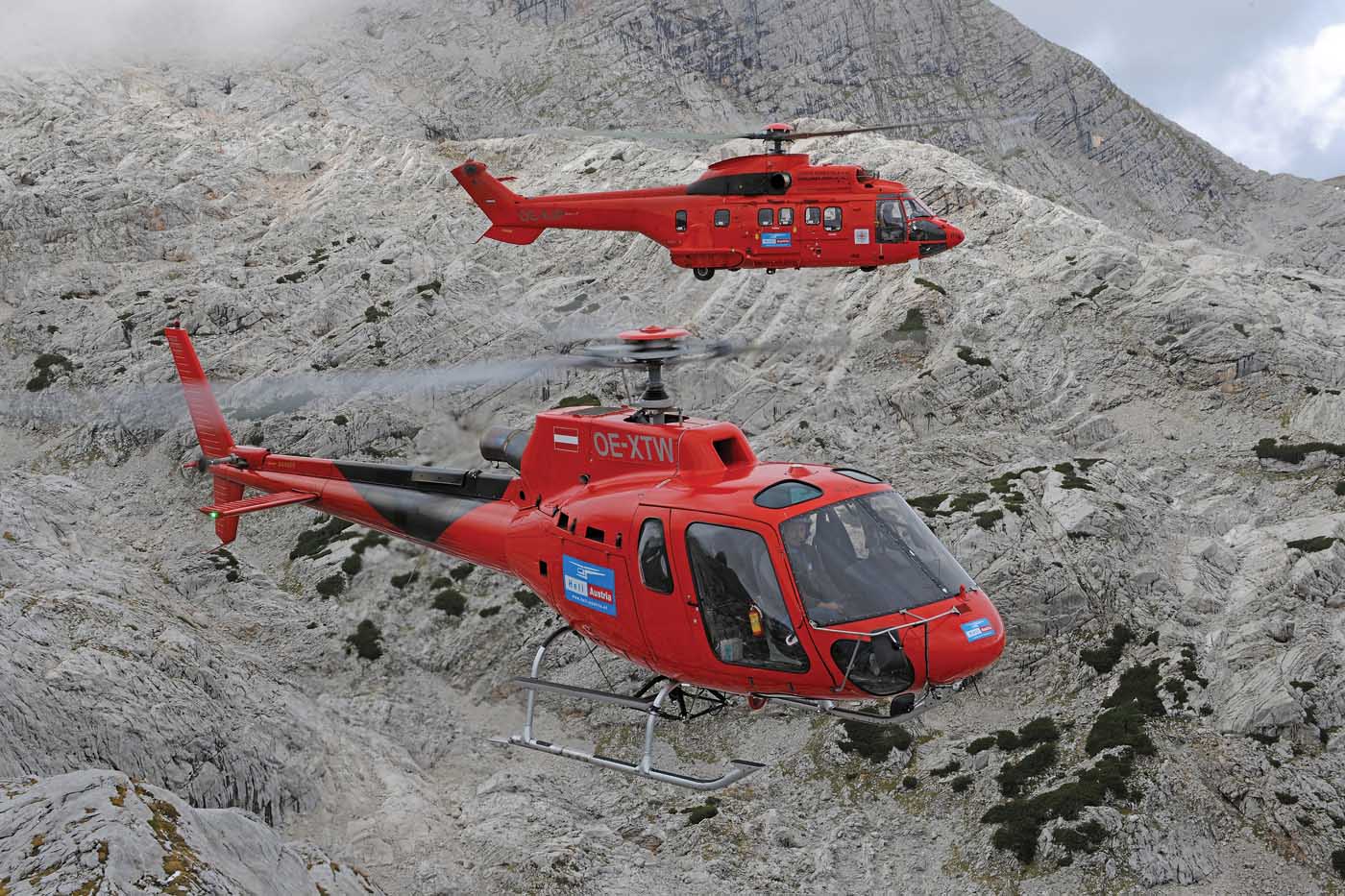It’s important to have the right tool for the job.
Looking at Heli-Austria’s large and diverse fleet of helicopters, it’s clear that CEO and chief pilot Roy Knaus has a big toolbox to draw from, packed with the right machines for a wide range of missions.
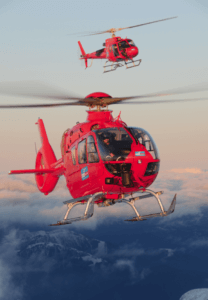
With over two dozen helicopters in the fleet, from the Airbus H125 to the Super Puma, Heli-Austria can handle virtually any kind of assignment. “Basically, we’re doing everything but offshore, and now we’re also into heavy lift,” Knaus told Vertical.
Heli-Austria is based in St. Johann im Pongau, about 40 miles (65 kilometers) south of Salzburg, in the Austrian Alps. The company also operates Heli-Tirol, based in that Austrian state, and Martin Flugrettung – or Martin Air Rescue – which is the country’s helicopter emergency medical service (HEMS) provider.
There are 150 people working at the company’s headquarters and bases, including 30 pilots, and HEMS doctors and paramedic crews.
“We have a very broad coverage of the Alps because we have aircraft at nine bases in Austria, Switzerland, and Northern Italy, flying a mix of EMS, sightseeing flights and heli-skiing,” said Knaus.
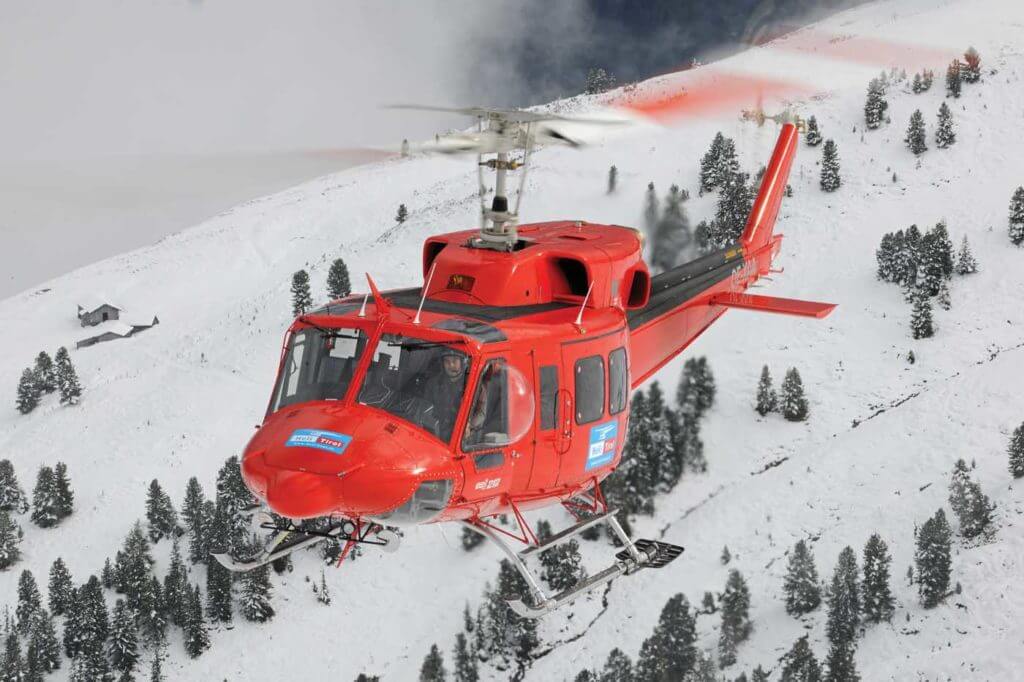
The company has recently added an H130, a helicopter well-suited to sightseeing operations. The aircraft is the first H130 in Austria and Germany, and a second will be added later this year. It joins Heli-Austria’s remarkably varied fleet of MD 902, H125/AS350 B3e, and H135 helicopters, and for medium and heavy-lift missions, it has the Bell 212 and 412, and AS332 L and AS332 L1 Super Pumas.
Three more H135s will be added to the fleet this year, and two will be equipped with Airbus’ innovative and advanced Helionix avionics system, including a 4-D autopilot.
A racing start
Heli-Austria began operations in 1984, flying a used Hughes – now MD Helicopters – 530F. Launched by Knaus’s father, the company initially didn’t have its own Air Operator’s Certificate (AOC).
“But my father knew Niki Lauda, the Formula One driver, so he operated under Lauda’s AOC, and the company was called Lauda Air for a couple of years,” said Knaus.
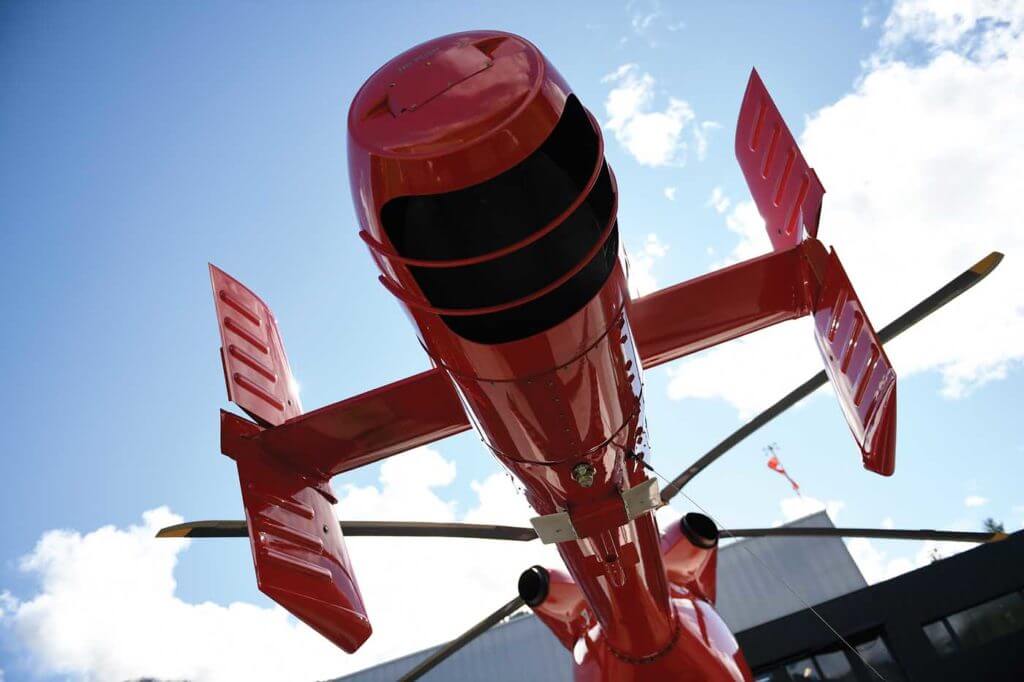
The fleet grew quickly to three MD 500s and diversified with the addition of an SA316 B Alouette. Tragically, in 1997, Knaus’s father was killed in an Alouette crash, an accident attributed to a third-party maintenance issue.
“My brother was also in the helicopter, and he survived, but with severe injuries that led to long-term physical challenges,” said Knaus. “He still works for the company as a ground operations manager, but he could not fulfill his dream to become a pilot.”
NOTAR or not
Heli-Austria flew about 7,700 hours in 2017, up an impressive 30 percent from the previous year. HEMS missions account for about a third of the flight time and generate about half of the company’s revenue.
The Martin Flugrettung EMS workhorse has been the NOTAR-equipped twin-engine MD 902. The NOTAR system replaces the anti-torque control provided by a helicopter’s tail rotor with a high volume of air ejected through slots in the tail boom, aided by a directional jet thruster. It’s quieter than a conventional tail rotor and gives pilots an increased safety margin when operating in confined areas.

Knaus acknowledged that the 902 is a favorite with pilots and medical crews. “The 902s are quiet with the NOTAR and they have a roomy and spacious cabin. The NOTAR system is very good, but the aircraft is a little underpowered for single-engine performance.”
But as ideal as the 902 might be, the company is transitioning to the H135.
“Airbus has improved the twin-engine performance and the single-engine performance of the 135,” said Knaus. “The little bit of a downside is the smaller cabin. Although we like the flight characteristics of the 902 — it’s even smoother than the 135 — the 135 is very good as well.”
He explained that the decision to move to the H135 was driven by his assessment that MD Helicopters “is no longer developing the 902. The costs are just increasing, and over the next 10 years, operating the 902 will get more and more expensive.”
Getting parts for the 902 can also be a challenge, according to Christian Zirngast, Heli-Austria’s head of design, who is also responsible for the airworthiness of the fleet.

“Here in Europe, we don’t have overhaul shops for some of the parts,” he explained. “So, for example, for the main gearbox, there is one overhaul shop in the U.K. But if they don’t have time, you don’t get a main gearbox.”
And although parts can be sourced from Federal Aviation Administration- (FAA)-approved shops, those facilities also need approval from the European Aviation Safety Agency (EASA). “If a repair shop is only FAA-approved, then we are not allowed to put in a repaired part,” said Zirngast.
Light and powerful
Heli-Austria operates from mountain bases as high as 7,000 feet (2,130 meters) above sea level, with missions up to 13,000 feet (3,960 meters). In this challenging environment, flying a powerful, light helicopter can both enhance safety and make a pilot’s mission easier to accomplish.
Recognizing this, Heli-Austria has developed in-house engineering solutions that improve the operational capabilities of the machines in its fleet, holding supplemental type certificates (STCs) for many of its helicopters.
“The standard [AS]355 is not a twin-engine for the mountains. It’s just not delivering enough engine power,” said Knaus. “While I consider the aircraft very good, we have a lot of enhancements that we have incorporated in the aircraft.”

Heli-Austria developed an STC that replaces the machine’s original engines with the Rolls-Royce M250-C20R that develops about 20 percent more thermodynamic power. The aircraft also has a larger tail rotor for improved control authority.
“We once had an engine failure at 7,000 feet, and the pilot saved the crew and the aircraft,” said Knaus. “If you would have an engine failure at 7,000 feet with the standard 20F engine, you’re going to go down.”
By reconfiguring, updating, and redesigning systems, avionics and other components, the company has developed programs to both enhance the capabilities and reduce the weight of its other helicopters, including the Bell 412 and the Super Puma.
Knaus explained that with an STC to move the 412’s autopilot system into the nose, and new ADS-B compliant Garmin avionics, “our 412s are the lightest 412s in the world, and more user-friendly for the pilot.”
But even this particularly useful tool in the Heli-Austria toolbox has its limitations. “The 412 is a great aircraft — it’s multirole,” said Knaus. “We can use it for EMS, and it has a good cabin. But it’s more noise, more fuel consumption, and it has more downwash.”
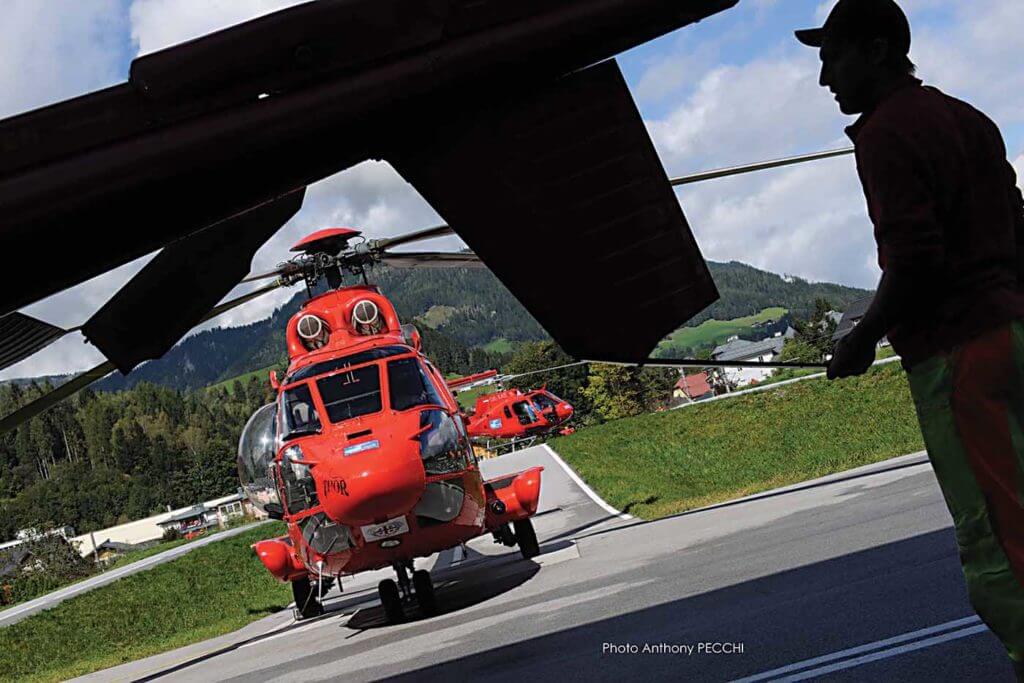
For the Super Pumas, the company has developed “baby-sponsons” that reduce the empty weight of the machine by 300 pounds (135 kilograms).
The big cat
In May 2016, Heli-Austria added its first Airbus AS332 L Super Puma, bringing a heavy-lift capability to its clients in Europe.
“We didn’t have a single job when we bought the aircraft, but we knew we were going to make it work,” said Knaus. “We know our customers, and if we advanced to heavy-lift, we knew they would give us jobs.”
Over the past two years, Heli-Austria’s Super Pumas have flown varied missions, including firefighting in Italy and Sardinia, construction projects in the Austrian Alps, and long line flights in the German cities of Frankfurt and Cologne.
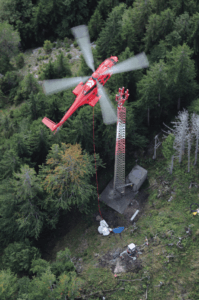
According to Knaus, the big machine holds it own against other heavy-lift contenders. “We were firefighting in Sardinia, and the government compared the performance of the Super Puma to the [Erickson] Aircrane. In a four-hour timeframe, they found out the Super Puma burns less fuel, it can stay on the fire longer, can put as much water onto the fire as the much bigger Aircrane, and the availability of the Super Puma was much better.”
Heli-Austria’s AS332s were not subject to the EASA Emergency Airworthiness Directive (AD) and temporary flight suspension that resulted from the tragic crash of a Super Puma off the coast of Norway in April 2016.
“We are not concerned because the issue is with the main gearbox on the newer version, which is the Super Puma EC225 [H225),” explained Zirngast. “We have the older version. This is a time when an older aircraft is better than a new one.”
Heli-Austria’s Super Pumas are a favorite of deputy chief pilot Jürgen Köll, who has been with the company since 2004 and has flown most every helicopter in the fleet.

“It’s a really neat machine — it’s just different,” said Köll. “It’s really impressive, and you can move four tonnes on the hook and bring it accurately to your position. When I’m out there, doing construction and really precise work like that and it goes perfectly, that’s what I love.”
Giving pilots the best
Having a current 9,500-hour pilot as CEO – and one who’s as knowledgeable about technology and industry advancements as Roy Knaus – has put Heli-Austria high on the list for pilots seeking new opportunities.
“We have pilots applying for jobs because they like the innovation of the company and they like the pilot-minded equipped aircraft,” said Knaus. “I want to give the pilots the best aircraft, so they can do the job perfectly.
“We have so many applications, but for us it’s still important to grow people within our organization. Long term, it’s the best. From our point of view, the best is to grow your own people, because then they understand the culture.”
And part of that culture is ensuring that new pilots have the opportunity to learn from more seasoned and experienced crew.
“Low-time pilots start at the ground floor in our company,” explained Köll, who said that new hires start as ground crew, and then move on to the H125 to fly ferry legs.
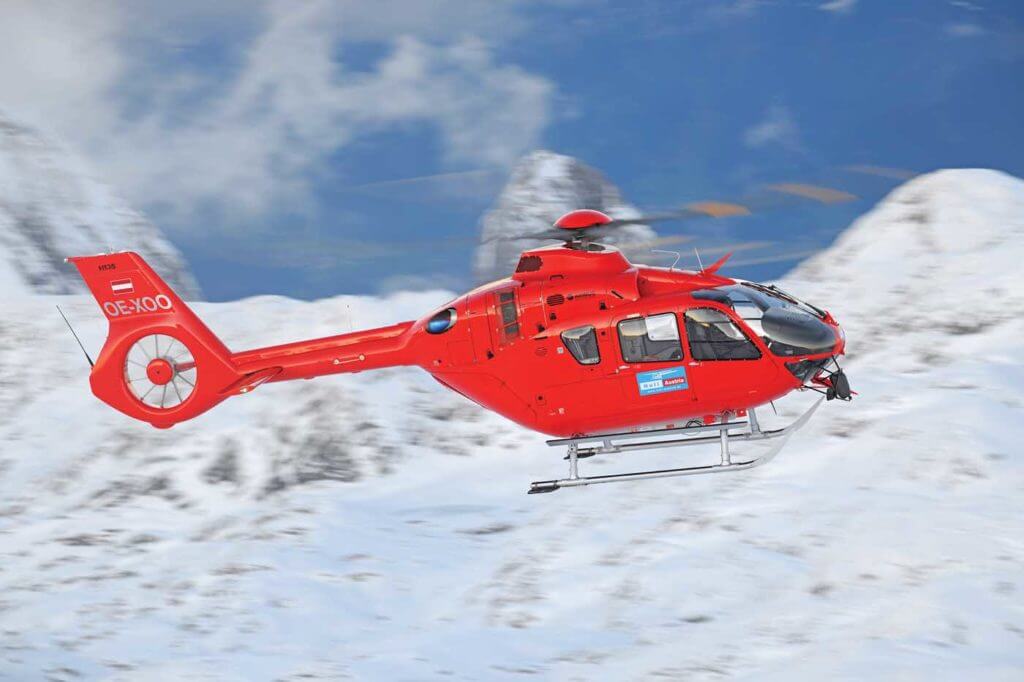
“In our experience, ferry flights are the most important thing for those new pilots, because they get a lot of training, flying for a couple of years under supervision,” he added. “When they are done, these pilots are really good, because they’ve learned from the pros.”
Being a good neighbor is important to Heli-Austria and can make training flights a challenge in the noise-sensitive communities around the company’s bases. To reduce the number of flights, Heli-Austria is using simulators for Super Puma training and is hoping to add sims for the H125 and H135.
“That’s our advantage, because we have such a big fleet of helicopters and pilots,” said Knaus. “If you’re an operator with just two aircraft, you can’t move like we do. The biggest hurdle at the moment is getting qualified engineers.”
He also believes that the regulatory environment has become a hurdle to growth.
“EASA has been pushing for too many rules too fast for the industry to adopt,” he said. “No pilot will be able to follow 2,000 pages of paperwork — it does not make aviation safer.”
Nimble and innovative
Heli-Austria has seen rapid growth over the past 10 years, thanks in large part to a quick-decision-making process that exploits new opportunities. Over the next five to 10 years, Knaus sees Heli-Austria becoming an even more integrated Approved Training Organization (ATO), with increased simulator training, and more bases throughout the European Alps.
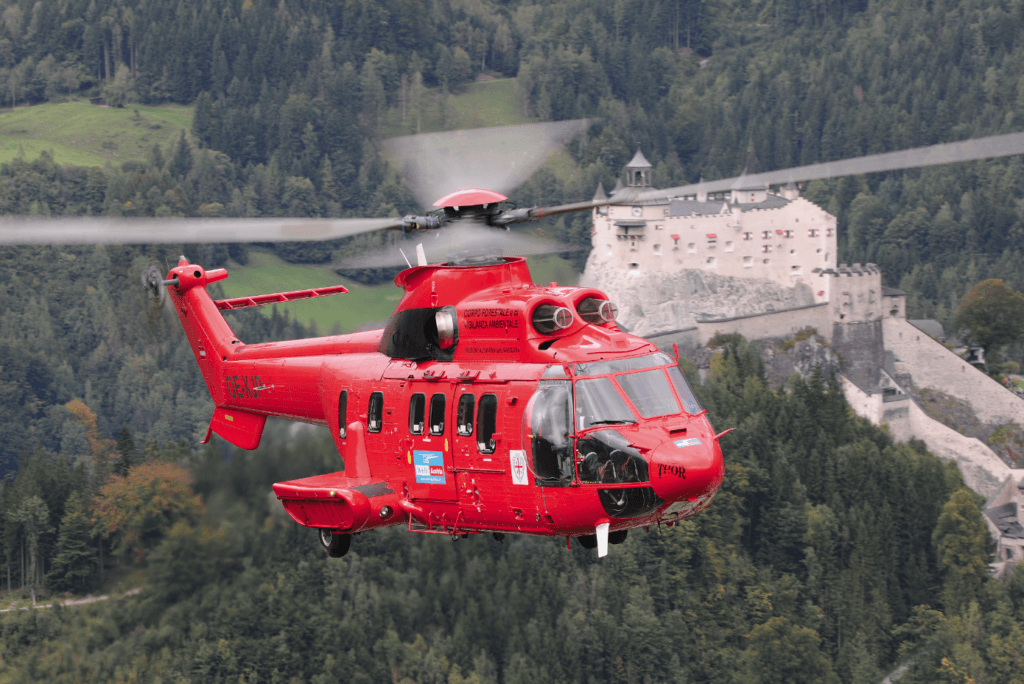
“We have a very flat hierarchy, and when we make a decision, we’re fully committed to it,” said Knaus. “Sometimes our competitors don’t even understand why we are moving in a certain direction. But if the decision was wrong or poor, you also have to be able to change it. When I make a decision, I don’t have to talk to anyone else.”
While Knaus is laser-focused on the future of his company, he’s still a passionate helicopter pilot who loves to go flying in his incredibly beautiful backyard. And yes, he has a favorite helicopter, too.
“If it’s not about work, and you just have a blue day to go flying, I think the nicest is the H130. It’s really perfectly made for the pilot to enjoy the flight.





